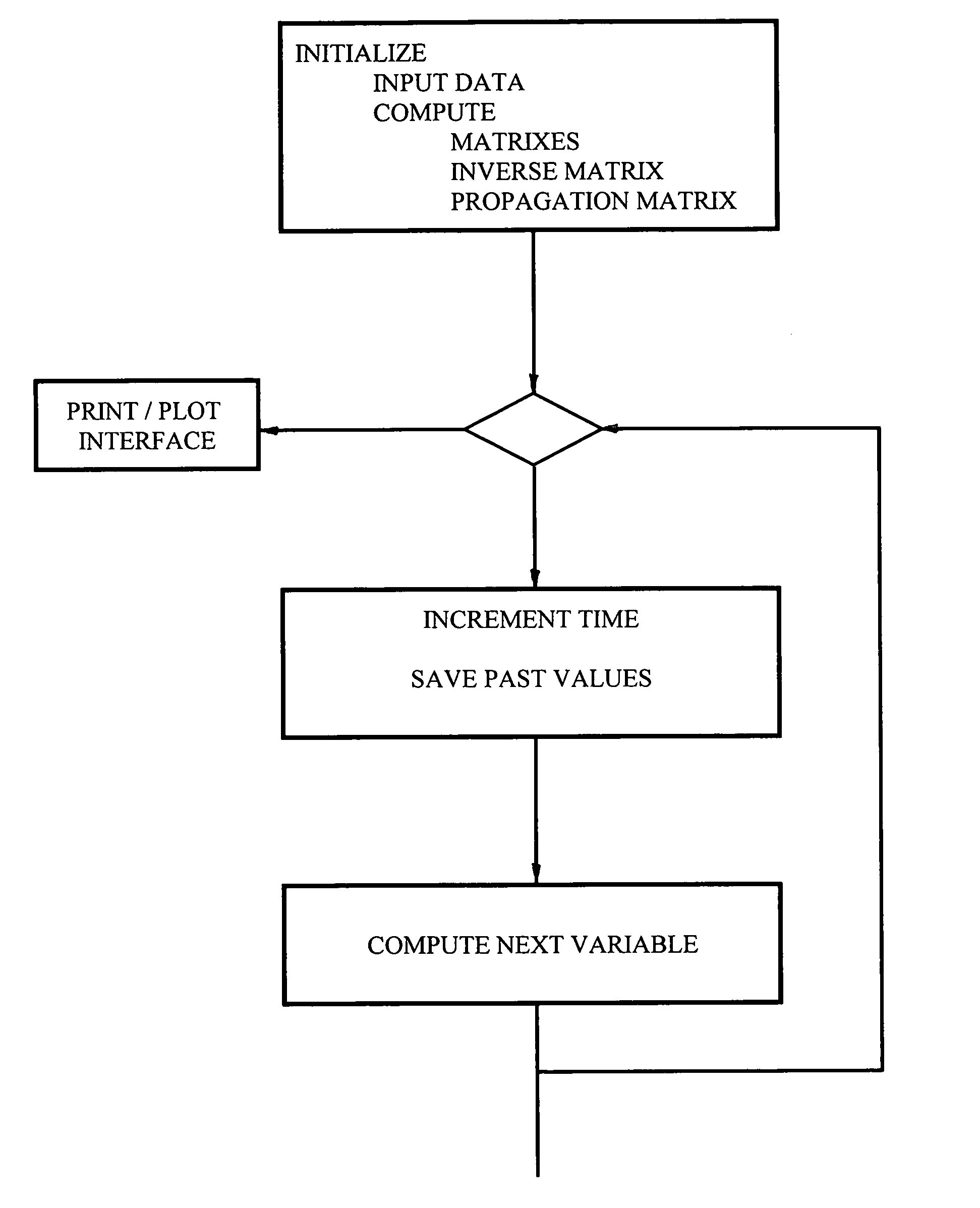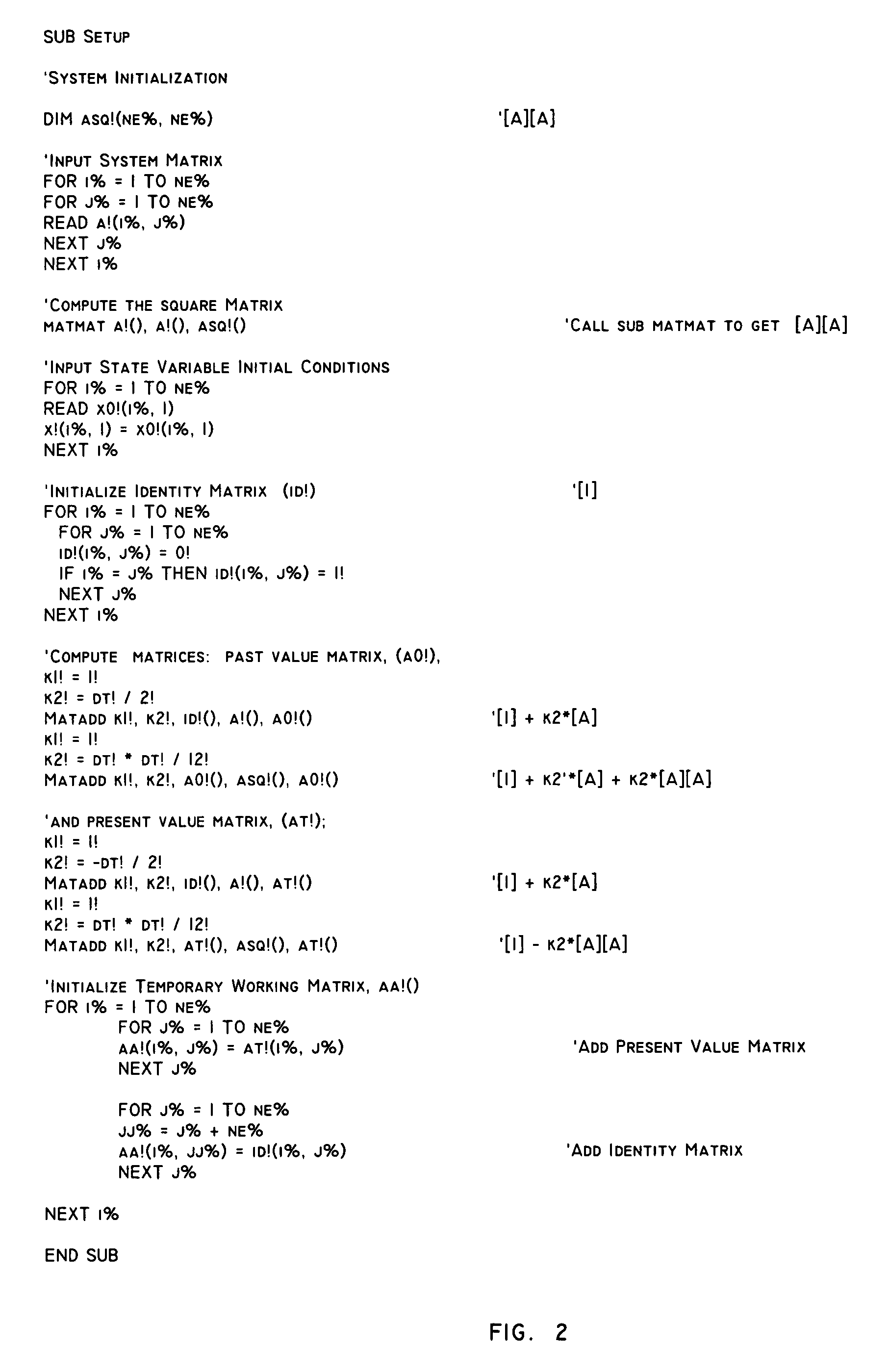Fast computer algorithms for solving differential equations
a computer algorithm and differential equation technology, applied in computing, complex mathematical operations, instruments, etc., can solve problems such as difficult discreteness, high complexity and sophisticated methods, and limited discreteness in the digital computer representation of equation 1, and achieve the effect of improving “real time” performan
- Summary
- Abstract
- Description
- Claims
- Application Information
AI Technical Summary
Benefits of technology
Problems solved by technology
Method used
Image
Examples
first embodiment
A First Embodiment
The Euler representation of the differential equation is shown in equation 3 above. The past value of x, i.e. xn, is known; the value of x at the present time, i.e. xn+1, is unknown.
If we now consider equation 3 at the boundaries, i.e. at time tn and at time tn+1, we note that the equations represent fixed values, i.e. constants. When we now insert the values for x at these boundary conditions we note that the equation is no longer a differential equation but a mere algebraic equation. We can now rewrite the equation 3 in terms of the boundary conditions. Thus:
xn+1=xn+δ(axn+1) (6)
We still do not know the value of xn+1, However, equation 6 is a simple algebraic equation and we can solve for xn+1. Reordering equation 6 we have xn+1=11-δ axn(7)
Equation 7 represents a simple system described by a single differential equation and is the simplest embodiment of the invention. However, the method holds equally true for a general system of equations. In this cas...
second embodiment
A Second Embodiment
Expressed in a Single Equation:
Consider the first order differential equation 1 above as a starting point in describing this invention. We posit an auxiliary function of time existing continuously in the time interval between the discrete times of computations. Thus
ƒ′(t)=b+ct (8)
where f′ is df / dt., b and c are constants, and t is time. So far we are considering an absence of inputs. Integrating 8 we have f(t)=d+bt+c2t2(9)
where d is a constant of integration. Equation 9 is now our approximation of the variable x in the time increment between computations. We determine the coefficients of equations 8 and 9 by evaluating the functions at the boundary conditions.
Setting tn=0 at the beginning of the computer interval and tn+1=δ at the end of the computing interval, we replace the values of 8 and 9 at these times. Simultaneously we posit that, at the boundary conditions, the auxiliary functions closely represents our state equations, i.e. f′(t)=x′ and f(t)=...
third embodiment
A Third Embodiment
This embodiment builds on the third postulate underlying this invention while also including the first two postulates. The overall system is separated into two sets, a first set comprise elements and a second set comprise auxiliary equations.
The elements consist of independent first order differential equations. Unforced, they each yield a unique mathematical closed form solution; this is the familiar complementary solution of equation 2 above and 37 below. The complementary solutions retain their exponential form throughout the overall system. We will refer to elements yielding such solutions as source elements and to the solutions as source exponentials. These elements are equivalent to integrators of analog computers.
The second set consist of an array of interconnections between the first order elements, thus forming a coupled, overall system. Solutions of the coupled system is obtained via auxiliary equations representing the interconnections between the e...
PUM
 Login to View More
Login to View More Abstract
Description
Claims
Application Information
 Login to View More
Login to View More - R&D
- Intellectual Property
- Life Sciences
- Materials
- Tech Scout
- Unparalleled Data Quality
- Higher Quality Content
- 60% Fewer Hallucinations
Browse by: Latest US Patents, China's latest patents, Technical Efficacy Thesaurus, Application Domain, Technology Topic, Popular Technical Reports.
© 2025 PatSnap. All rights reserved.Legal|Privacy policy|Modern Slavery Act Transparency Statement|Sitemap|About US| Contact US: help@patsnap.com



